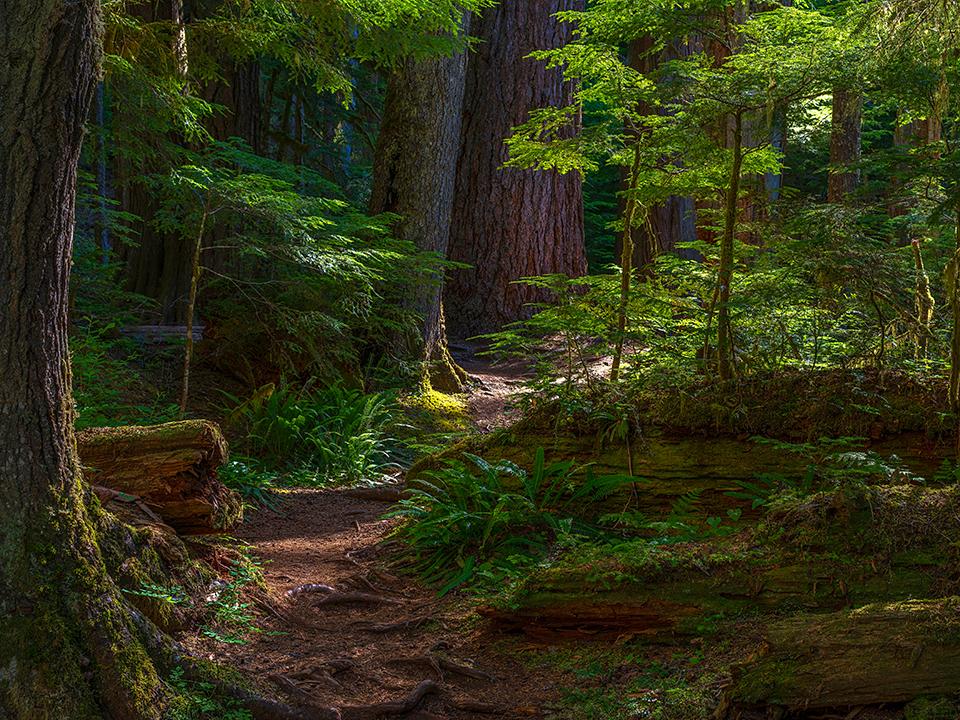
Morning along the Twin Firs Trail, Mount Rainier National Park / Rebecca Latson
I’ll begin this month’s column with the same words as the previous column: I love every unit of the National Park System I’ve ever visited. That said, I have favorite parks (just like favorite spots in parks) that I think are exemplary of certain photographic subjects. Of course, this is totally subjective, since it’s all my opinion, and it’s only for the national parks I’ve visited and photographed. Anyway, as promised in the previous month’s photo article, here is Part 2 of my favorite parks for certain photography categories. Just like last month’s article, you’ll notice some parks appear more than once on this list.
Favorite Parks for Forests
I recall a period early in my camera-toting life when I wondered why on earth anybody would want to photograph boring, dark forests. Of course, at the time, I was not that familiar with low-light photography and couldn’t capture a decent forest interior, which may have had something to do with that mindset. Thankfully, with improvement of my photo skills, I saw the light. Forest interiors make wonderful photography subjects. There are so many shades of green and brown, so many interesting tree and leaf shapes, and wonderful plays between shadow and light providing a quiet, reverent, even mystical feeling while capturing a forest interior scene.
Mount Rainier National Park (Washington)
This national park is where I first began seriously photographing forest interiors. It’s a tricky thing, at times, because you need to work with your camera settings to balance the shadowy parts with the bright, sunlit parts. At Mount Rainier, many feet of snow cover the much of the park through early July, but the lowland forests with their small waterfalls and lush greenery afford a photographer myriad opportunities for great compositions.

Mossy greenery within the forest interior, Mount Rainier National Park / Rebecca Latson
Olympic National Park (Washington)
A walk through the Hoh or Quinault Rain Forests is a walk through the primeval. Muted birdsong, the drip, drip, drip of water from leaves and mosses draped over tree branches, and the burbling rush of a small stream may often be the only sounds you’ll hear as you wander along trails in these temperate rain forests.
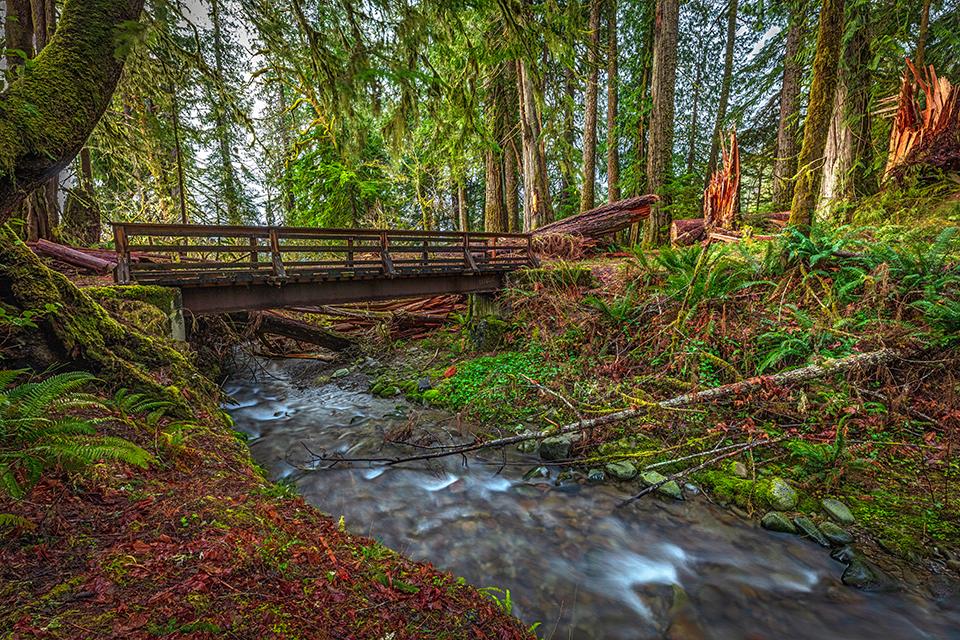
The bridge over July Creek in the Quinault Rain Forest, Olympic National Park / Rebecca Latson
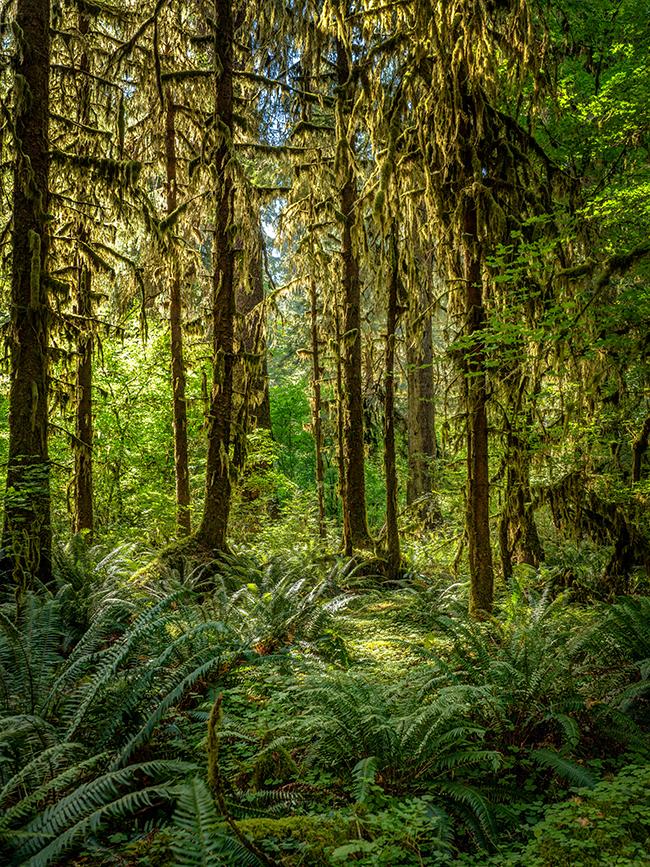
A play of light and shadow in the Hoh Rain Forest, Olympic National Park / Rebecca Latson
Redwood National and State Parks (California)
Talk about tall trees! This is where your wide-angle lenses come into play in an effort to capture or at least, infer, the neck-craning heights of these coastal redwoods along Northern California’s Pacific Coast.

Sun and shadows in a coastal redwood forest, Prairie Creek Redwoods State Park, Redwood National and State Parks / Rebecca Latson

Tree tops in the mist, Stout Grove, Jedediah Smith Redwoods State Park, Redwood National and State Parks / Rebecca Latson
Favorite Parks for Autumn colors
Fall is my favorite time of year to visit any park unit, not only for the cooler temperatures and clearer atmosphere, but also for the possibility of a little fall leaf color. Here are a couple of my favorites for that autumn color.
Acadia National Park (Maine)
Nothing says autumn like Acadia National Park! Vivid, saturated shades of red, orange, yellow and gold festoon the trees and shrubs, turning even more brilliant when the sun bathes leaf surfaces. I’d return to the Acadia area in a heartbeat during the fall, and not just for the lobster rolls.

Autum colors in Acadia National Park / Rebecca Latson
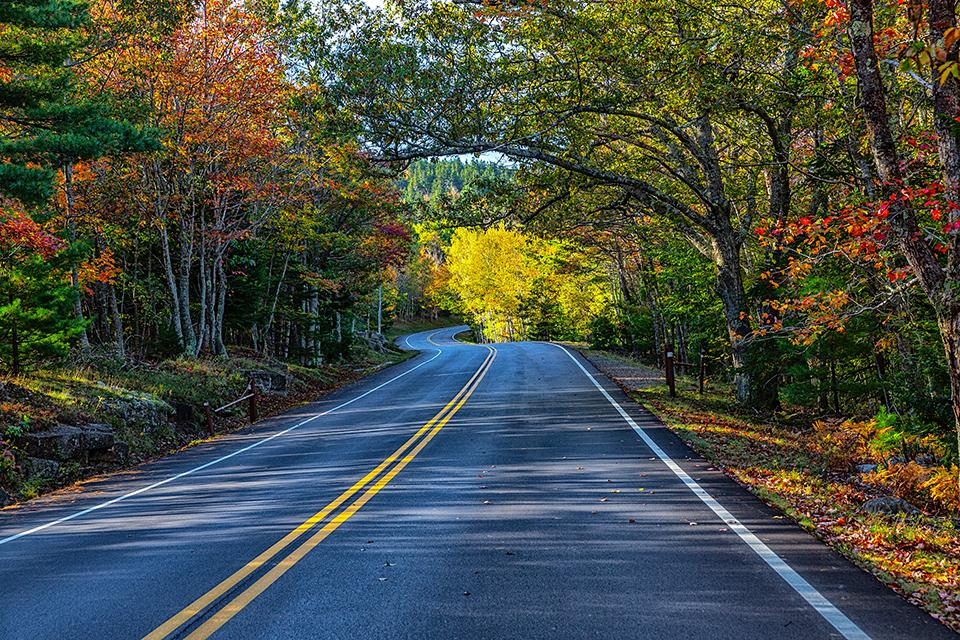
Autumn colors along the road, Acadia National Park / Rebecca Latson
Mount Rainier National Park (Washington)
Drive the length of the Stevens Canyon Road toward the Paradise area of this national park, and you’ll see swaths of autumn color painting the mountainsides.
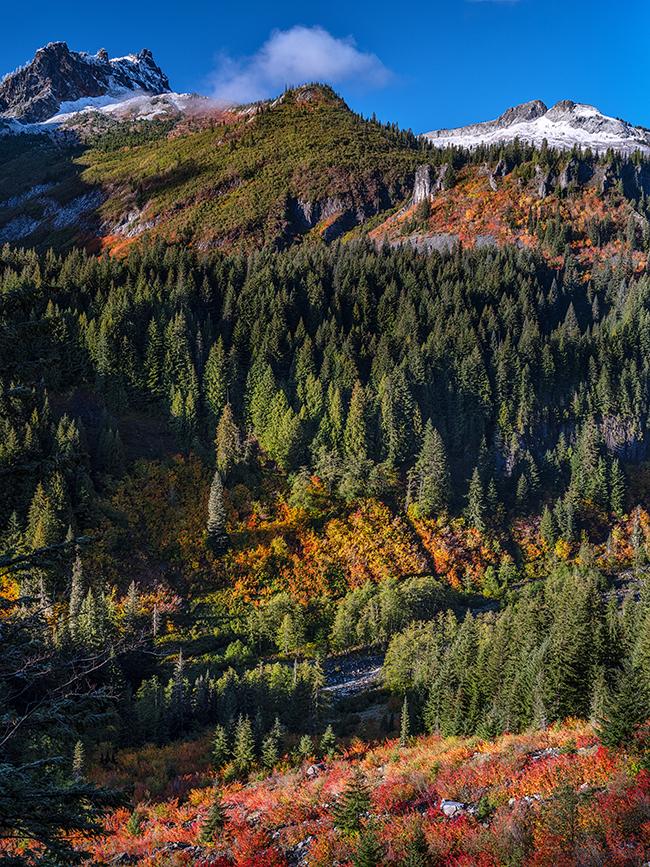
Autumn colors along Stevens Canyon Road, Mount Rainier National Park / Rebecca Latson
As you start your hike up the network of trails in the Paradise area, take a moment to soak in those orange and red shades of huckleberry bushes nestled in the foreground beneath “The Mountain’s” glow as the morning sun bathes the scenery.
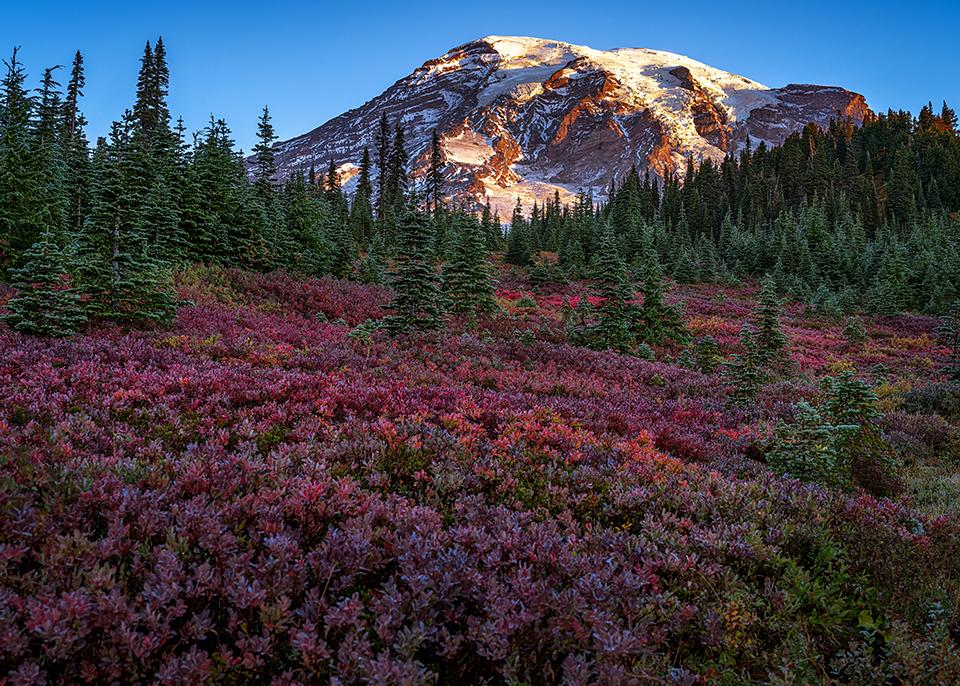
Autumn sunrise over Paradise, Mount Rainier National Park / Rebecca Latson
Favorite Parks for Wildflowers
Big Bend National Park (Texas)
Hands down, Big Bend is one of my favorite parks for spring wildflower photos. The main attraction is the blooming cacti with their deeply-saturated blossoms of magenta, orange-red, yellow, and apricot. Mid-to-late April is usually a good time to see cactus in bloom. Non-cactus flowers are plentiful, too, and include the Big Bend bluebonnet, and ocotillo (which is not a cactus, btw).
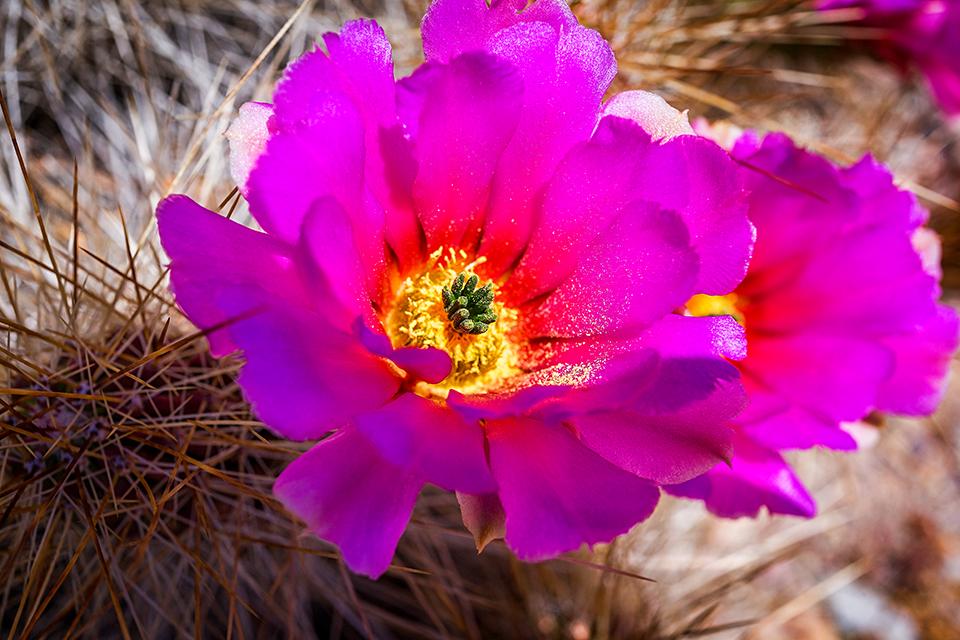
A strawberry pitaya cactus bloom, Big Bend National Park / Rebecca Latson
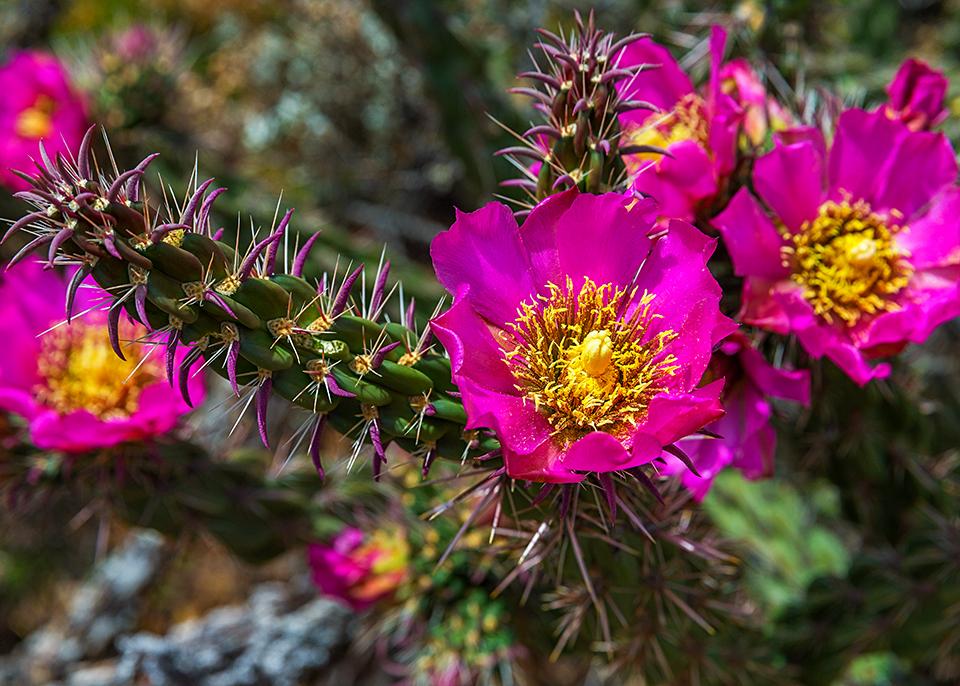
Blooming cholla cactus, Big Bend National Park / Rebecca Latson

Claret cup cactus in bloom, Big Bend National Park / Rebecca Latson
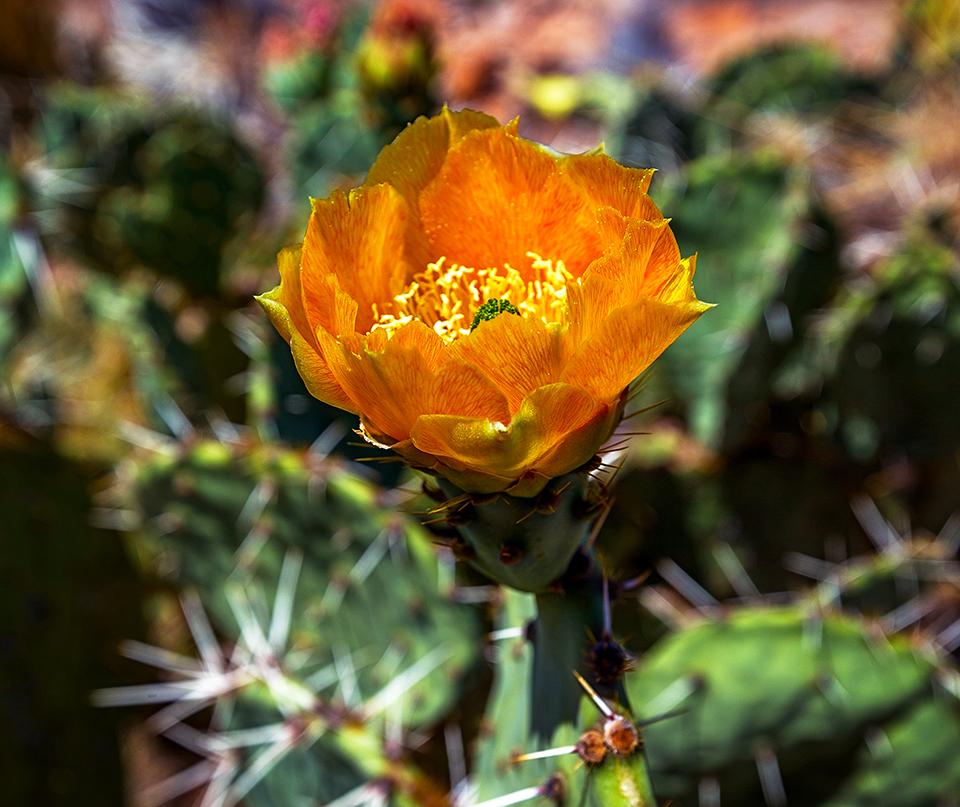
Prickly pear cactus in bloom, Big Bend National Park / Rebecca Latson
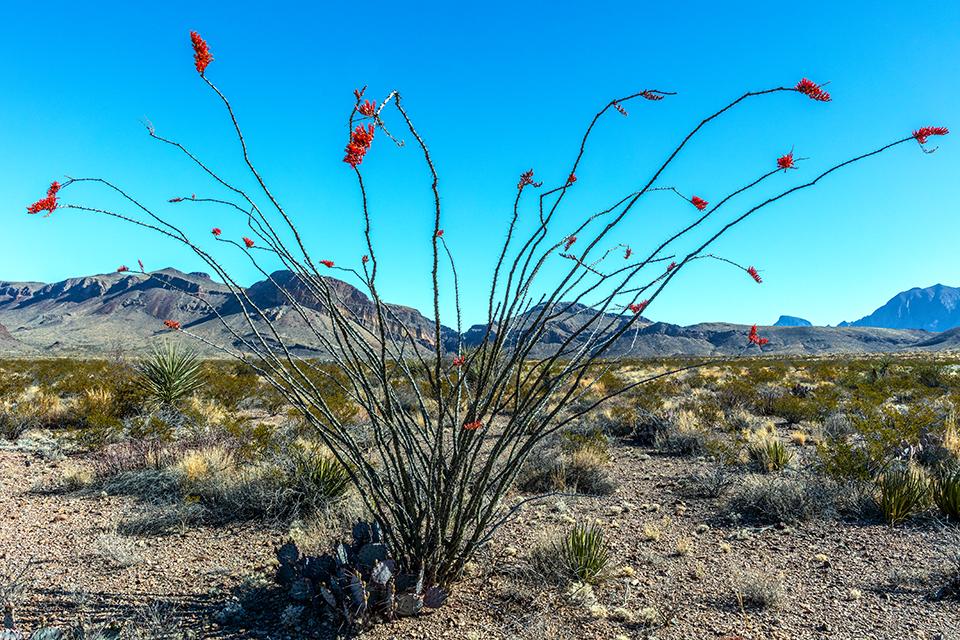
Blooming ocotillo, Big Bend National Park / Rebecca Latson
Mount Rainier National Park (Washington)
Spring in the upper elevations begins around June and lasts through at least a part of August. It’s a riot of flower color during that time, when you’ll see glacier lilies, avalanche lilies, tiger lilies, penstemon, phlox, beargrass, columbine, rosy spirea, and shooting star, to name just a few of the many wildflowers blooming at Mount Rainier.
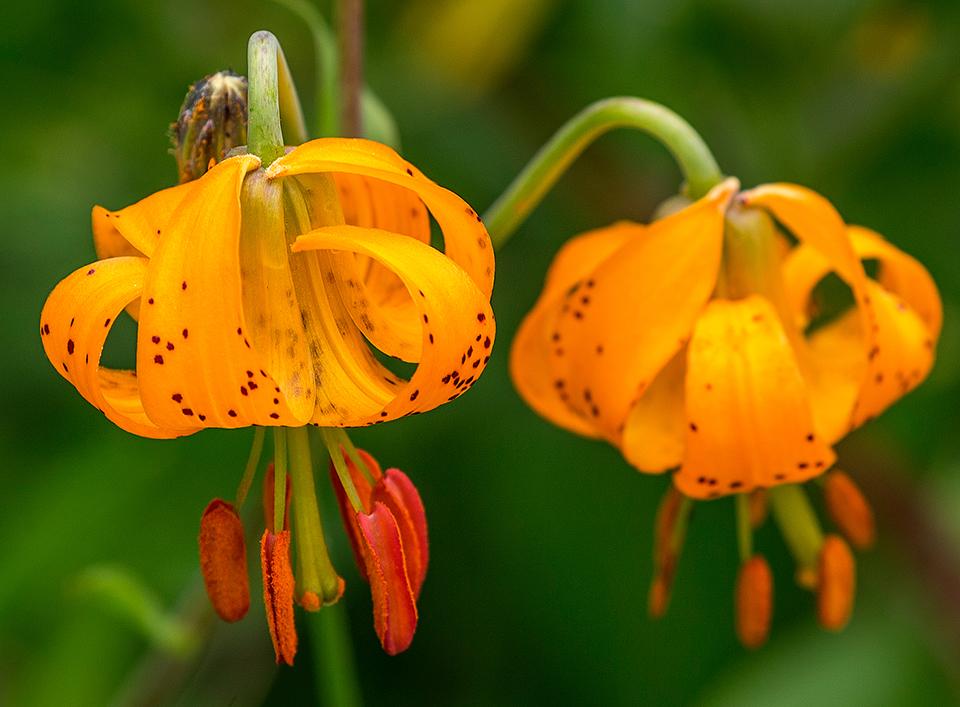
Tiger (aka Columbia) lilies filling the frame, Mount Rainier National Park / Rebecca Latson

Avalanche lilies, Mount Rainier National Park / Rebecca Latson
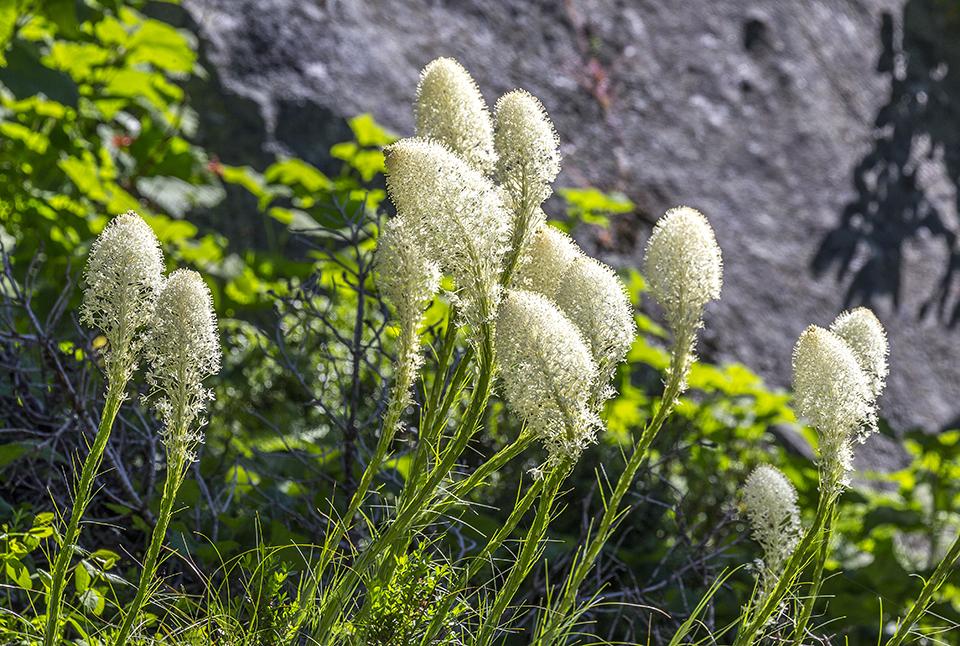
Beargrass, Mount Rainier National Park / Rebecca Latson
Favorite Parks for Water
By water, I mean anything from the ocean to a lake or river or waterfall. So many park units offer variations of H2O.
Lewis And Clark National Historic Trail (Washington portion)
I’d first heard about Cape Disappointment State Park along the Washington portion of Lewis and Clark National Historic Trail while Googling “king tides.” King tides are the highest tides of the year, producing dramatic, explosive waves crashing against the picturesque cliffs at Waikiki Beach at Cape Disappointment. If you are lucky, there will be at least one sunrise during the normally rainy fall and winter months, allowing you to capture stunning backdrops to these incredible waves.

High waves at sunrise at Cape Disappointment State Park, Lewis and Clark National Historic Trail / Rebecca Latson
Glacier National Park (Montana)
Mirror-smooth lakes surrounded by rugged mountains, turquoise waterfalls and clear, cold streams racing down glacially-carved mountainsides and slicing through dark forests make this a favorite park of mine for water photos.

St. Mary Lake reflections, Glacier National Park / Rebecca Latson
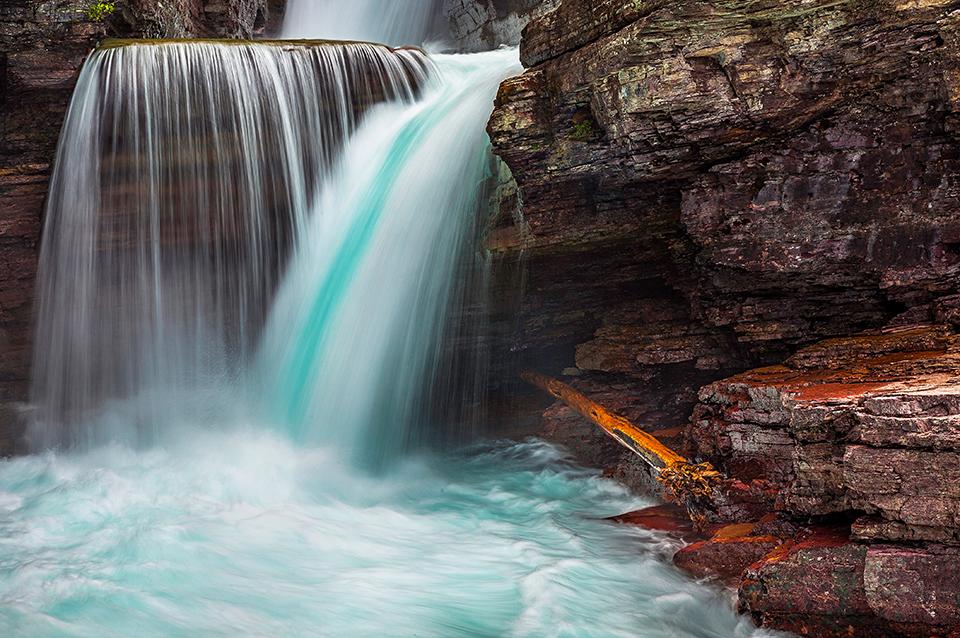
The turquoise shades of St. Mary Falls, Glacier National Park / Rebecca Latson
Olympic National Park (Washington)
Winter is a fantastic time for stormy ocean scenery shots, and the sunsets can’t be beat. But the ocean is not the only water draw in this national park. The clear, deep water of Lake Crescent surrounded by misty mountains and the satiny white froth of Sol Duc Falls surrounded by deep green vegetation also offer wonderful landscape photo ops.
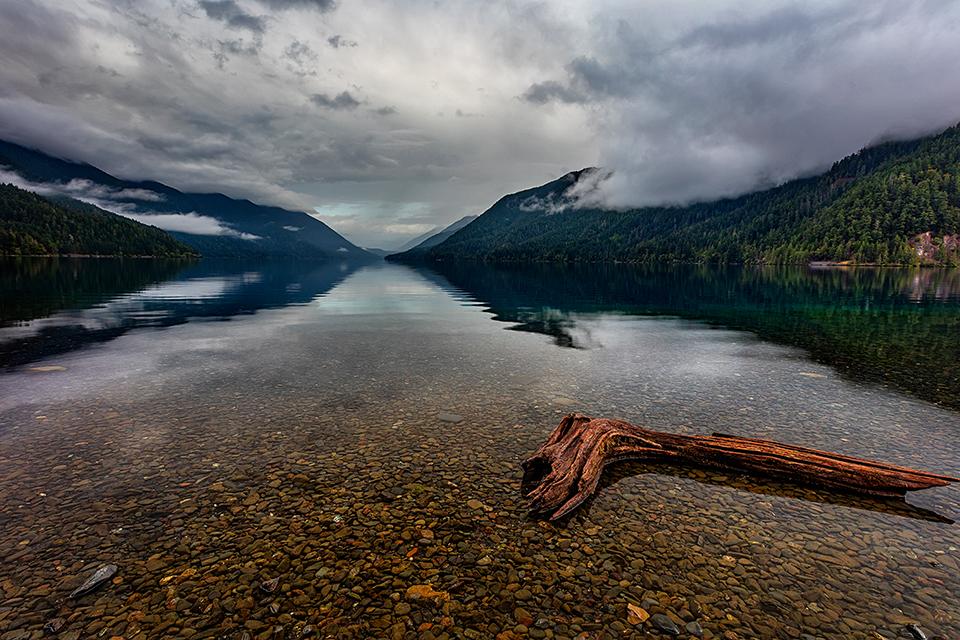
A moody morning at Lake Crescent, Olympic National Park / Rebecca Latson
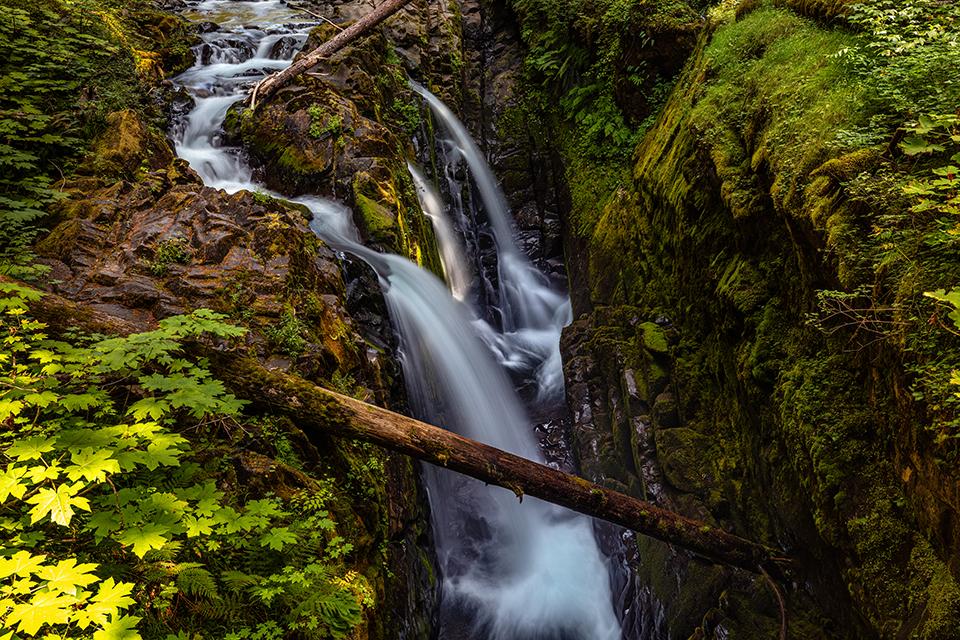
The silken froth of Sol Duc Falls, Olympic National Park / Rebecca Latson
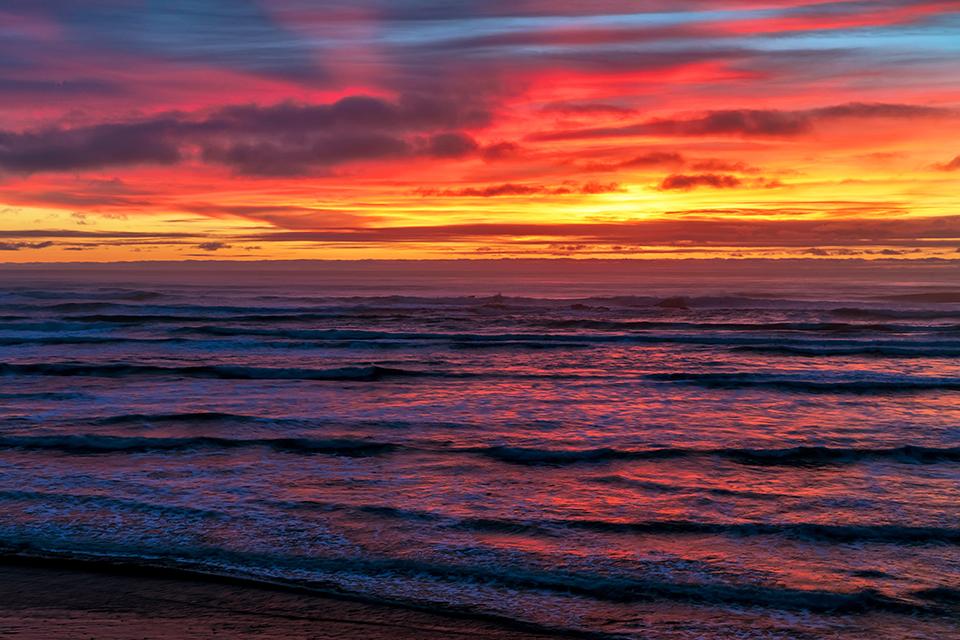
A winter sunset at Kalaloch Beach, Olympic National Park / Rebecca Latson
Mount Rainier National Park (Washington)
So much water here: Tipsoo Lake, Reflection Lakes, The Nisqually, White, Carbon and Ohanapecosh Rivers, Christine Falls, Narada Falls, Myrtle Falls, and numerous little gushing falls slicing through the lush greenery in the lower elevations. So much water. And that’s not even including all the glaciers!
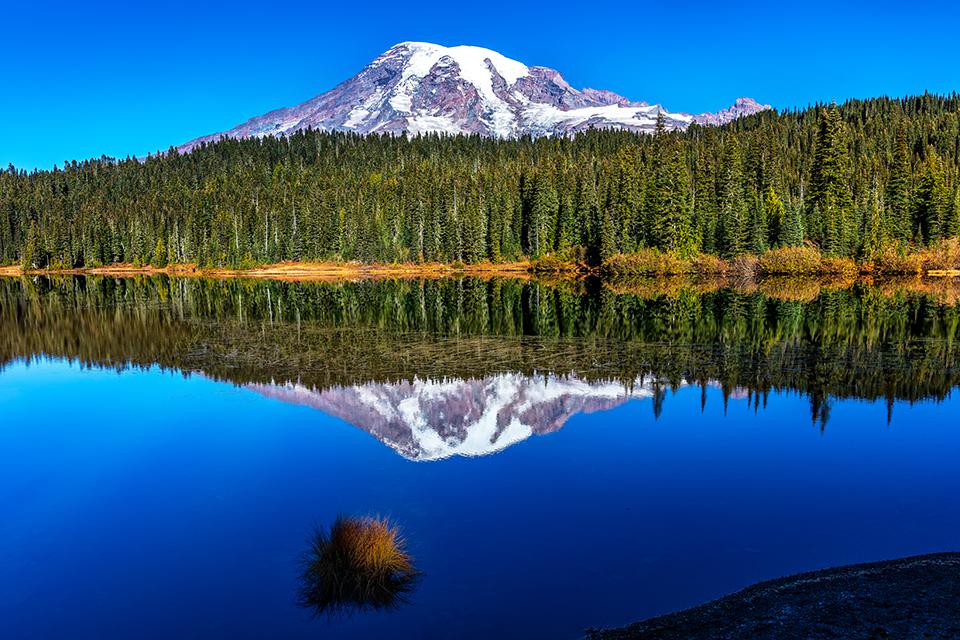
Reflections, Mount Rainier National Park / Rebecca Latson

A forest waterfall, Mount Rainier National Park / Rebecca Latson
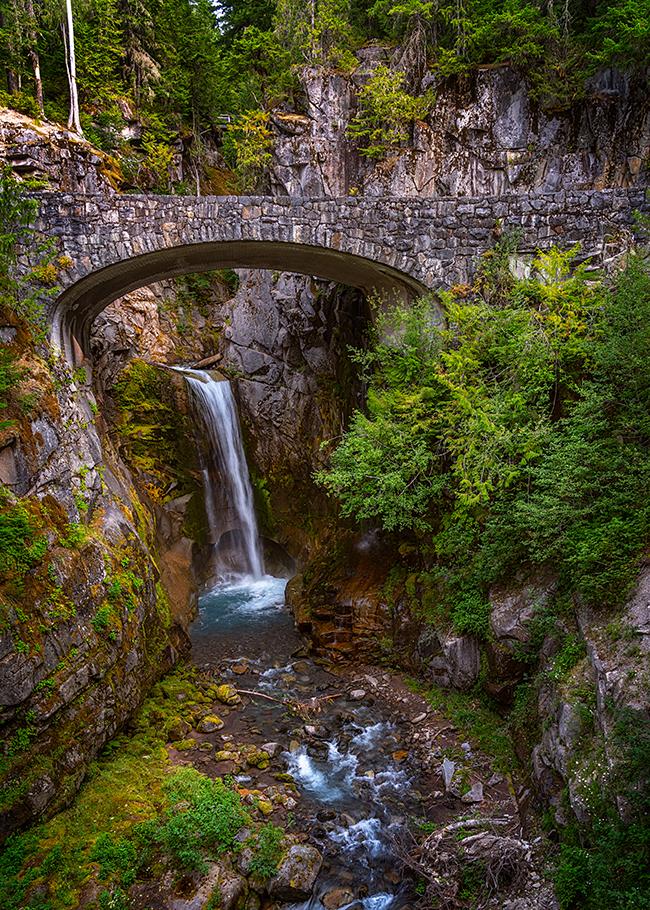
A late-summer flow at Christine Falls, Mount Rainier National Park / Rebecca Latson
Favorite Parks for Bird Photography
If you listened to the Traveler’s podcast episode 173, you’ll have learned about some great park units for bird photography. While not a dedicated birder, myself, I am always listening for birdsong at the parks I visit and am more than happy to capture a shot or two of an obliging bird posing for the camera.
Big Bend National Park (Texas)
In reviewing my photos, I seem to have photographed more birds in this national park than at any other park unit! Of course, this makes sense, since Big Bend provides multiple habitats perfect for multiple bird species.

A precariously-perched cactus wren with wind-ruffed feathers, Big Bend National Park / Rebecca Latson
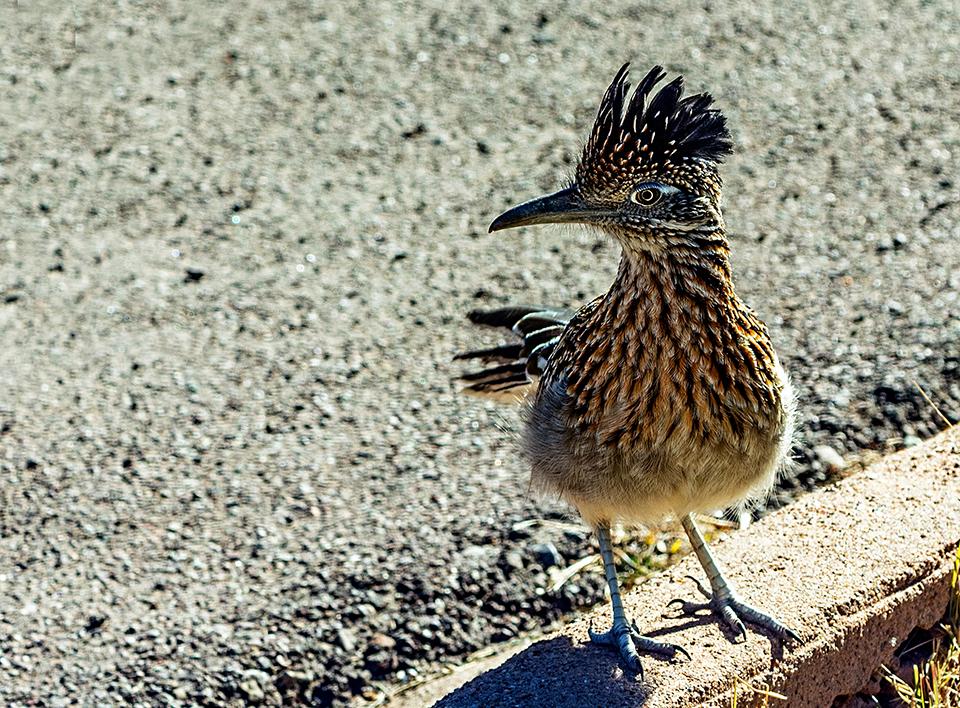
Meep meep! A nicely-posing roadrunner, Big Bend National Park / Rebecca Latson
Mount Rainier National Park (Washington)
This is another favorite park for bird photography and not just because I often see one of my favorites, the Steller’s Jay.

Steller's jay, Mount Rainier National Park / Rebecca Latson
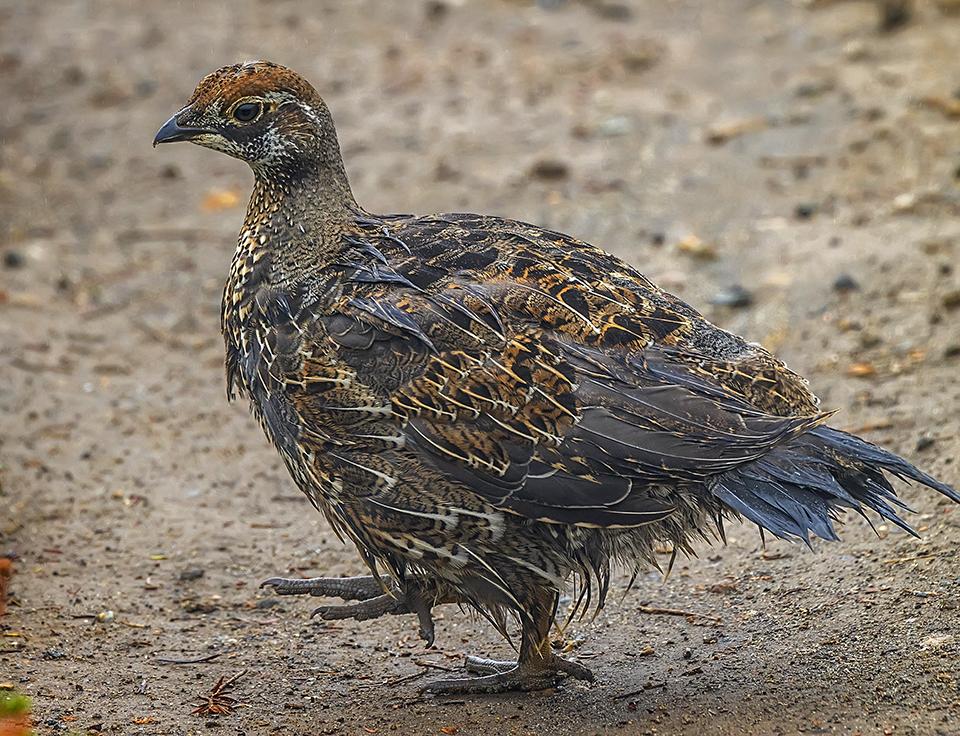
A soggy-feathered grouse chick at Paradise, Mount Rainier National Park / Rebecca Latson
Padre Island National Seashore (Texas)
This national seashore is a birder’s paradise. You might see brown pelicans, caracaras, skimmers, gulls, plovers, willets, sanderlings, and so many more along the shore and back into and beyond the dunes and tall grasses.
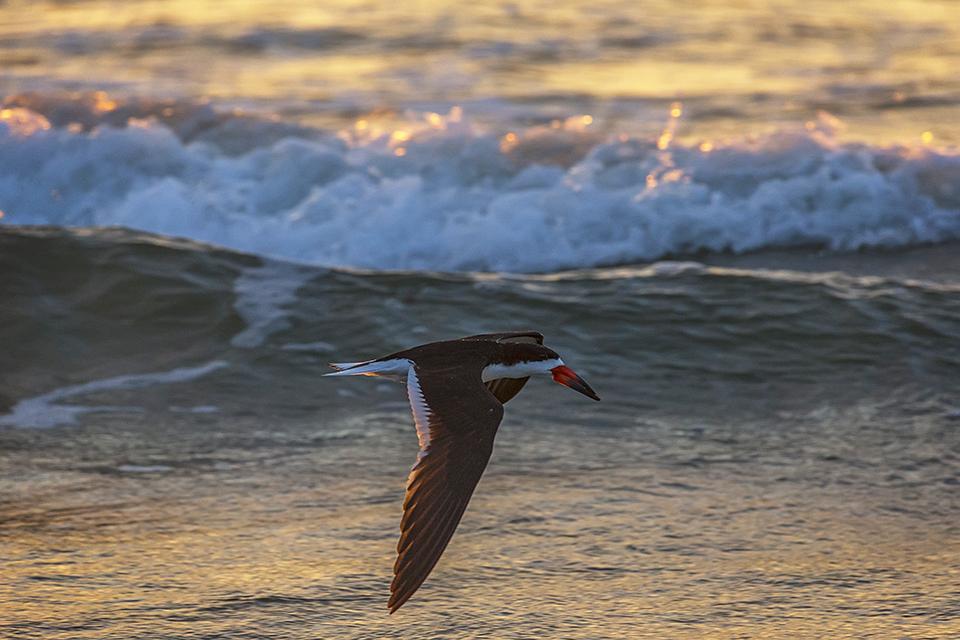
A skimmer looking for breakfast, Padre Island National Seashore / Rebecca Latson
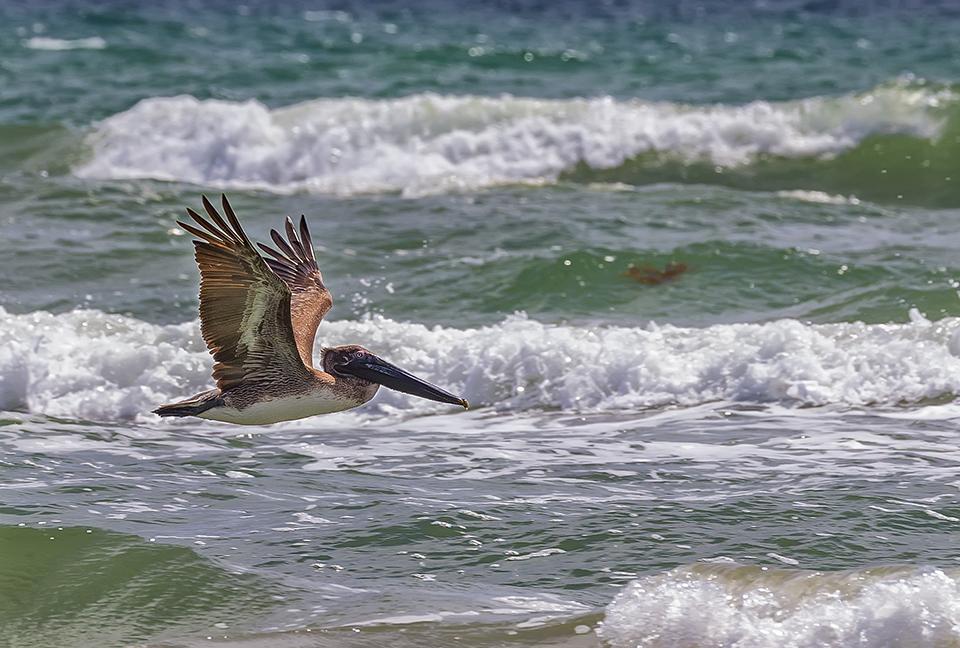
A brown pelican cruising the currents, Padre Island National Seashore / Rebecca Latson
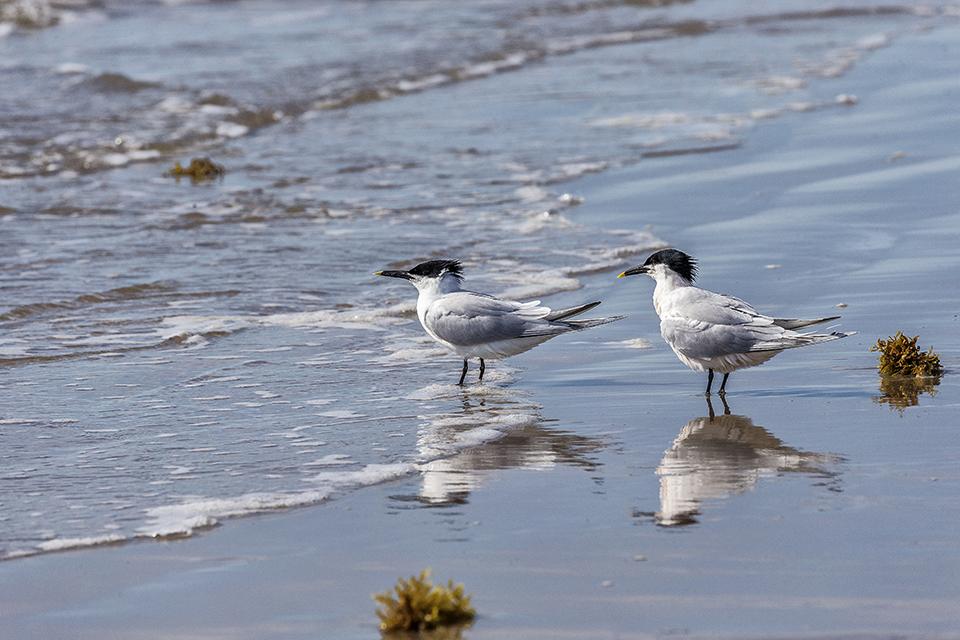
A couple of sandwich terns admiring the beach view, Padre Island National Seashore / Rebecca Latson
Favorite Parks for Geology Landscapes
Ok, much like sunrise / sunset photography, geology is another one of my favorite subjects for photography. These park favorites not only offer really colorful imagery, but also some crazy cool geology. You don’t have to know anything about geology to appreciate these landscapes, but it’s fun to learn about how things came to be, and the national park websites for these units do a nice job with explanations.
Bryce Canyon National Park (Utah)
Crumbly-rock hoodoos, spires, and towers provide a surreal atmosphere to the natural amphitheaters of this national park. Varying in gorgeous shades of pink and creamsicle orange, these rock formations becoming blindingly saturated with gold and brighter shades of pink and orange when the sun bathes them. Mornings and evenings are the best times to photograph this landscape.

Thor's Hammer and surrounding scenery, Bryce Canyon National Park / Rebecca Latson
Arches National Park (Utah)
Utah is blessed with several red-rock national parks and national monuments. This particular park is home to over 2,000 natural arches, as well as fins, balanced rocks, and other formations. Iconic sights such as Turret Arch, Landscape Arch, Delicate Arch, or Balanced Rock make for awesome photos, no matter what time of day you photograph. And remember, just because it’s an iconic scene photographed a gazillion times by others, doesn’t mean you shouldn’t capture a shot or two, yourself, since it’s your own photograph taken with your own camera.

Sunrise over Balanced Rock, Arches National Park / Rebecca Latson
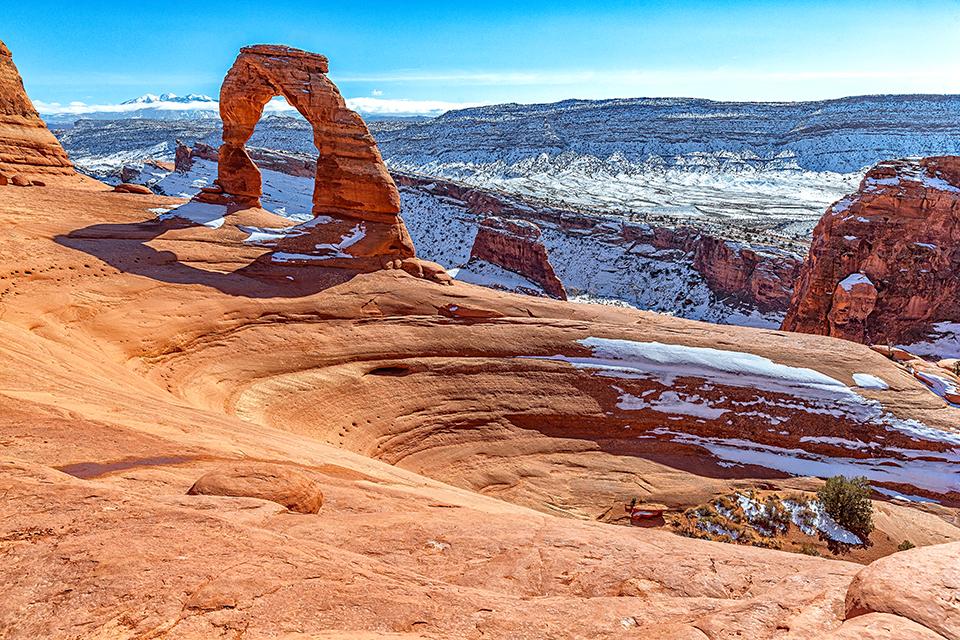
Delicate Arch landscape, Arches National Park / Rebecca Latson
Yellowstone National Park (Montana / Idaho / Wyoming)
There are not too many other park units where you can stand with your camera and photograph landscape features indicative of a volcanically-active underground not too far beneath your feet. For me, it’s always a thrilling experience to be standing on a boardwalk or a trail with my cameras, aiming the lens toward a colorful, steaming hot spring or erupting geyser, while hearing the bubbling hiss of water and smelling the odor of sulfur (yes, even the smell of sulfur is part of the park experience at Yellowstone). Watching Old Faithful erupt never gets old for me. It all reminds me how fragile the crust is upon which I stand and how truly unique are the photos I capture within Yellowstone.
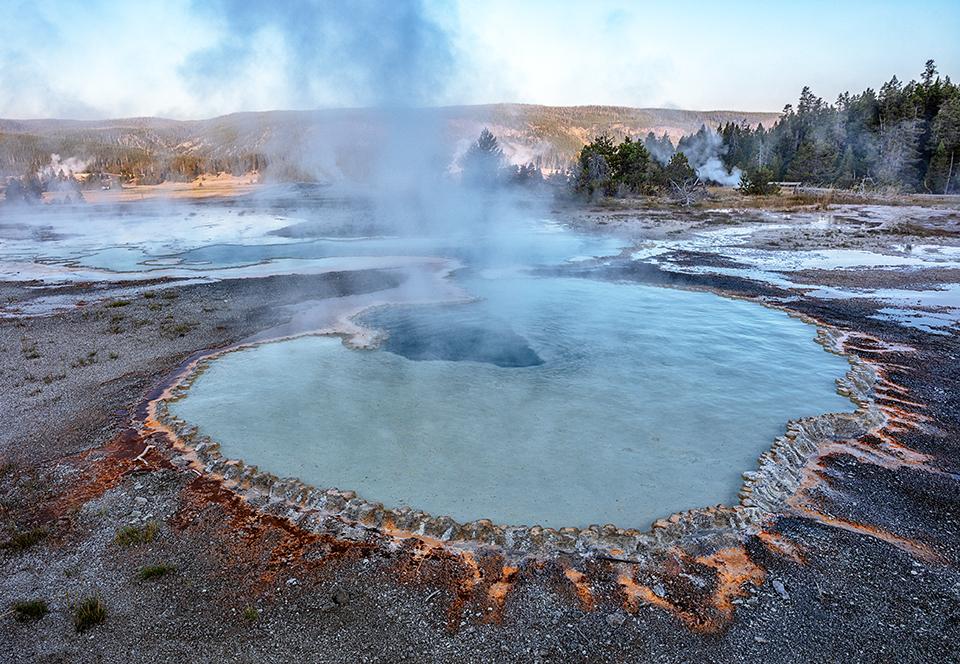
A steaming Doublet Pool, Upper Geyser Basin, Yellowstone National Park / Rebecca Latson
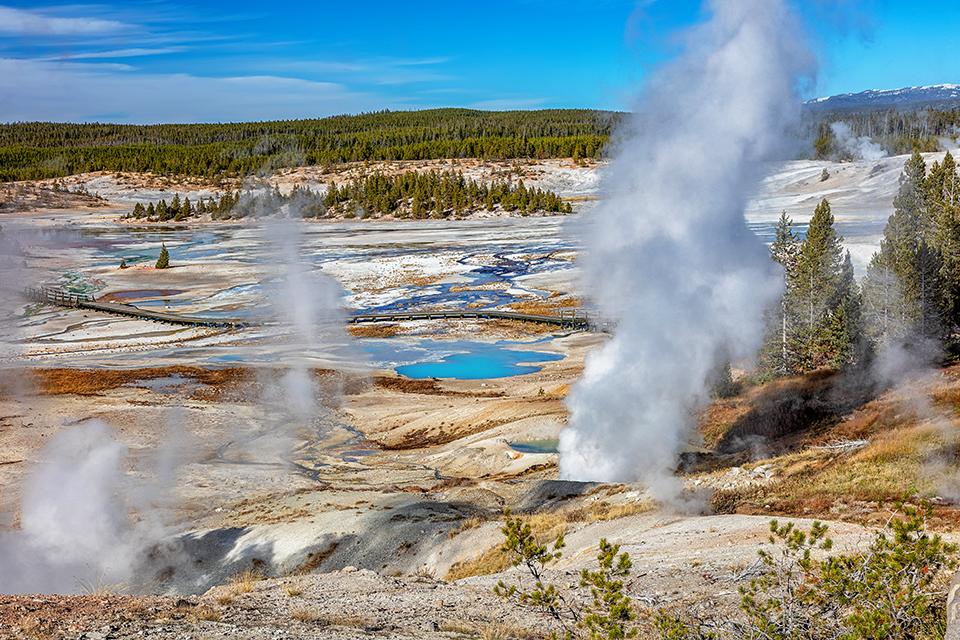
A view of Porcelain Basin, Yellowstone National Park / Rebecca Latson
Hawai’i Volcanoes National Park (Hawaii)
Here’s another park favorite with active geology beneath my feet and in front of my eyes. There aren’t too many places within the National Park System where I can see (and feel the heat from) a bright orange-red lava flow creating new landforms and building atop existing landscapes.
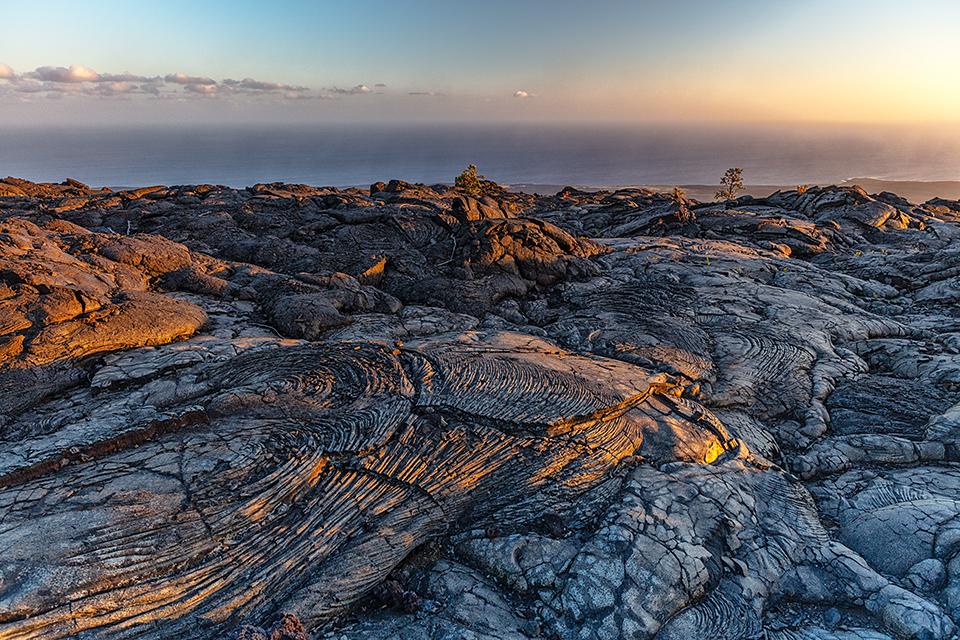
A Pahoehoe lava field looking out toward the Pacific Ocean, Hawai'i Volcanoes National Park / Rebecca Latson
Some lava scenes are ephemeral, like the “Firehose” feature you see here. Yet, where one lava feature eventually stops or is plugged up, another may pop up elsewhere. That’s the changeability of geology at Hawai’i Volcanoes National Park.
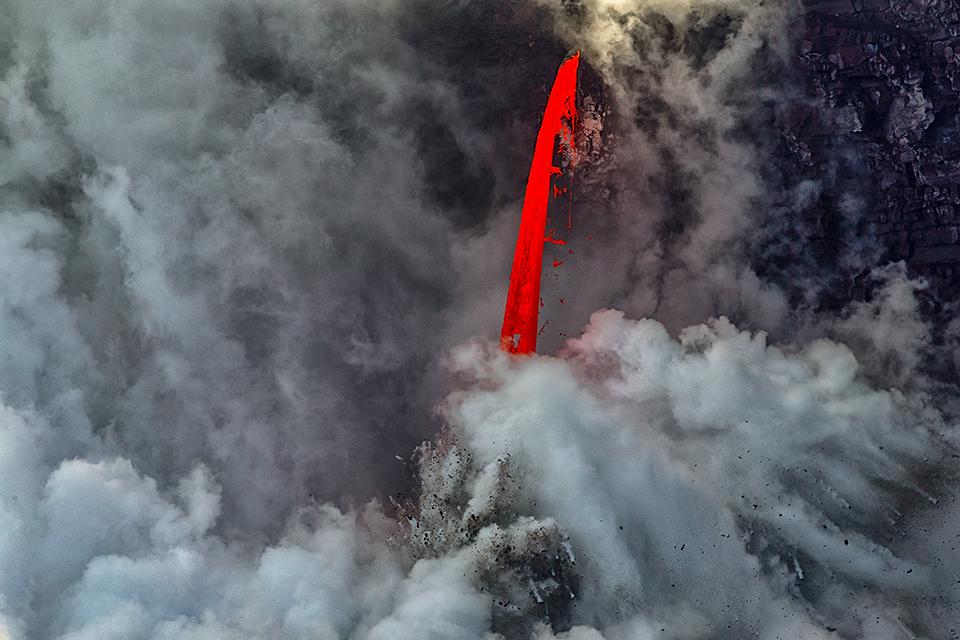
The power and bright color of the "Fire Hose," Hawai'i Volcanoes National Park / Rebecca Latson
Favorite Parks for Winter Photography
By “winter,” I mean snow. Not all national park units host that cold white stuff, but of the parks that do, and that I have visited, these are my favorites.
Yellowstone National Park (Idaho, Montana, Wyoming)
I’ve always wanted to travel to Yellowstone during the winter, and I finally made it out there. Winter changes Yellowstone’s entire landscape and character. It takes a little more effort to get there, and it’s a bit pricey, but for a once-in-a-lifetime photography experience, it can’t be beat. Just remember to pack traction devices for your boots.
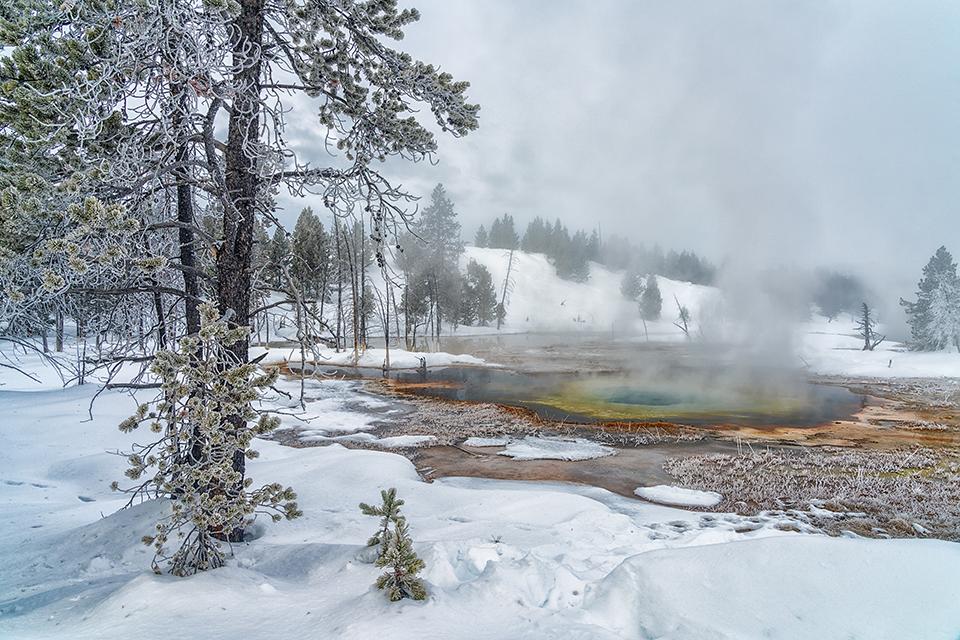
Upper Geyser Basin winter landscape, Yellowstone National Park / Rebecca Latson
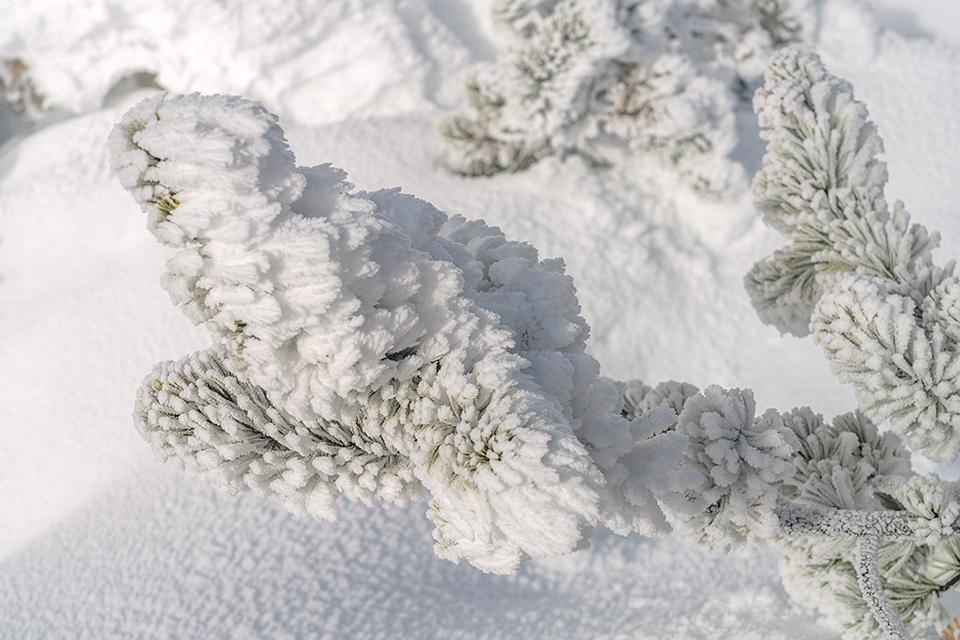
Very thick rhime ice, Yellowstone National Park / Rebecca Latson
Mount Rainier National Park (Washington)
Bring your snowshoes or cross-country skis along with your camera and tripod and set out into the snow around the Paradise area for some wintery shots with “The Mountain” in the background. Like Yellowstone, this park’s character and landscape change with the winter snows, as well.
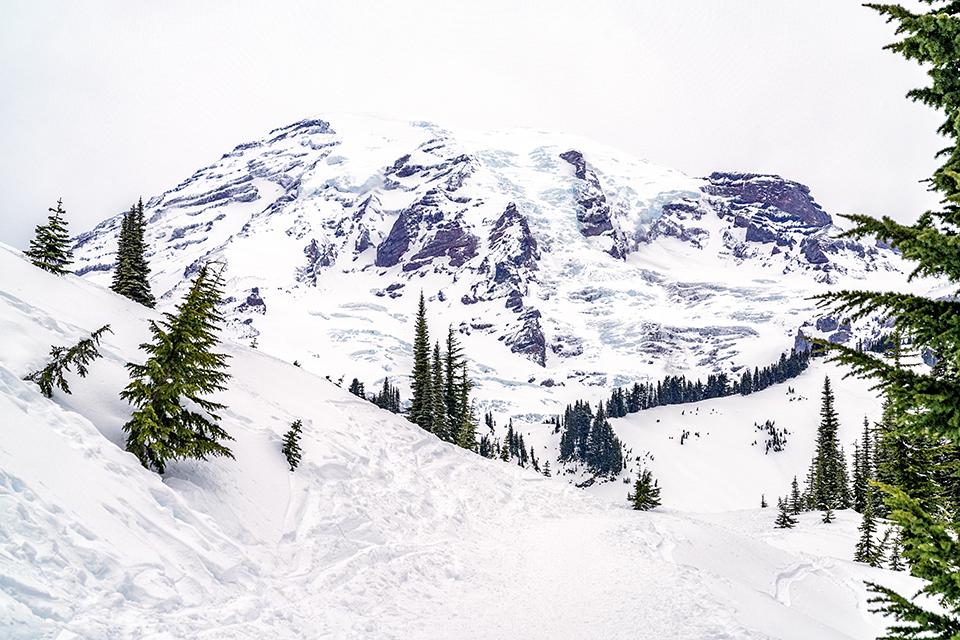
"The Mountain" in winter, Mount Rainier National Park / Rebecca Latson
Arches National Park (Utah)
It doesn’t always snow in this national park, but when it does, there’s nothing like clean, white snow against the bright red rock formations with a little green from the sagebrush or other shrubbery thrown in for good measure.

Snow day at Turret Arch, Arches National Park / Rebecca Latson
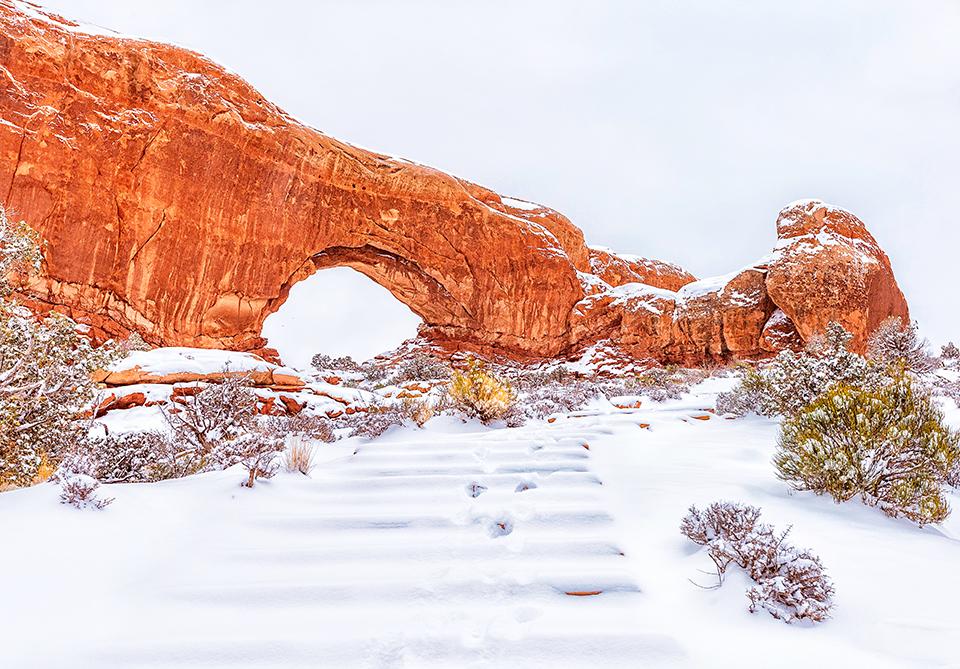
Snowy steps up to the North Window, Arches National Park / Rebecca Latson
There you go. My favorite parks for certain categories. I have no doubt that these favorites might change, or be augmented by, more first-time visits to other National Park System units or repeat park visits during different seasons. Maybe some of these parks are favorites of yours for the same reasons, or may become favorites once you and your camera have visited them, yourself.



Comments
Many lovely photos from many beautiful parks.
Wonderfull- capturing the Beauty of the PARKS- Been to most of these in my 81 years and these are representative as was part one. Thank You Rebecca